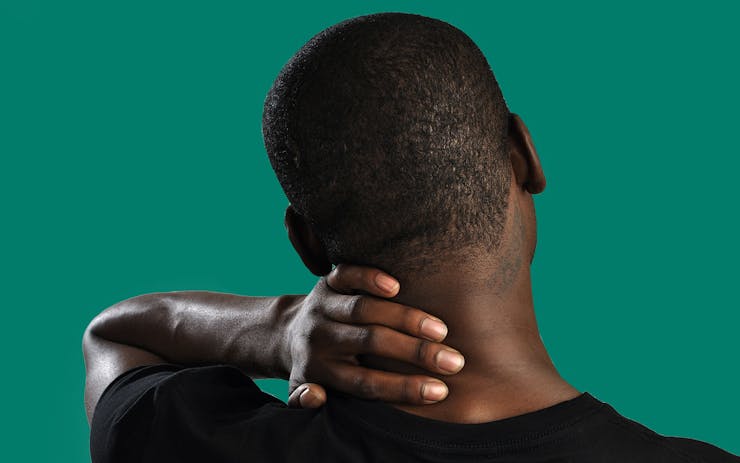Of all the conditions that motivate medical cannabis use in the US, chronic pain tops the list.Sixty-six percent of adult Americans now view marijuana as beneficial for pain management. An estimated 62% of patients rely on weed to help render chronic pain more manageable, and plenty more unregistered consumers likely seek it for the same purpose.
While evidence accumulates that cannabis can work wonders for those living in the grips of chronic pain, it’s not necessarily a quick fix or simple solution. Cannabis is a nuanced plant medicine that can elicit distinctive effects at different doses and provoke varied responses depending on delivery method and body chemistry.
Get it right and you have a powerful plant-based ally that can help lower your volume of pain. Get it wrong and you may experience paranoia, nausea, or other unwanted side effects.
A recent study published in the January 2020 issue of The American Journal of Psychiatry reports that adults who use cannabis to manage pain are at a higher risk of developing a use disorder than those using cannabis for purposes other than pain. The research highlights the need to cultivate an awareness of the potency of cannabis, despite its harmless, non-toxic reputation.
Does pain lead to cannabis use disorder?
Ultimately, the above study concluded that cannabis consumers living with pain might be vulnerable to adverse outcomes. Healthcare providers treating patients with pain need to monitor for signs of Cannabis use disorder (CUD) and convey credible information and education about the health risks associated with cannabis use. CUD can be characterized by a set of symptoms that affect the behavior, physical, cognitive, and psychosocial aspects of one’s life.
In the study, researchers studied non-medical cannabis consumption, comparing patterns between adults with pain and without pain, and drawing on data from the National Epidemiologic Survey on Alcohol and Related Conditions in 2001–2002 and 2012–2013. Approximately 20% of participants in both surveys had moderate to severe pain.
Those with pain used cannabis more frequently than those without pain in both surveys. In the 2001–2002 survey, 5.15% consumed cannabis for pain compared with 3.74% who didn’t; in the 2012–2013 survey, 12.42% consumed cannabis for pain compared with 9.02% who didn’t.
The researchers found that cannabis use disorder was more prevalent among respondents with pain rather than those without pain. In the 2012–2013 survey, 4.18% of consumers with pain developed cannabis use disorder (CUD), compared with 2.74% who developed the disorder but didn’t comsume cannabis for pain.
Do consumers really understand the plant?
Cannabis consumption and education is also a hot research topic, with a survey, also published in January 2020, reporting significant discrepancies between cannabis consumers’ knowledge and available evidence. Among some of the more striking findings, 74-81% of participants got their understanding of cannabis from their own experiences, while only 18% received information from primary care providers.
Shop highly rated dispensaries near you
Showing you dispensaries nearThose who received information from providers had a more thorough knowledge of medical efficacy. Between 38-42% thought cannabis consumption did not increase any risk. Those who consumed medical cannabis more frequently had an increased risk of adverse events. Again, the study’s authors highlighted the need for more education from physicians, caregivers, and dispensaries to raise awareness about both efficacy and risk.
For Dr. Oludare Odumosu, PhD, and CEO of Zelira Therapeutics, cannabis is medicine and must be handled with awareness and a concern for safety.
“With every medicine, abuse is a risk. Any adverse effect should be taken seriously,” he says.“A 2017 report released by the National Academies of Sciences, Engineering, and Medicine cited pain as a condition for which cannabis is effective,” said Odumosu. “That said, education is an evolving process, and no one should assume that they understand all there is to know about the use of cannabis.”
The treatment of pain with cannabis requires a subtle approach that takes into consideration the subjective qualities of an individual’s pain experience.
“For example, if you ask me and I say on a scale from one to ten that the pain that I feel is a five, my five might be somebody’s three. Somebody’s three might be somebody else’s ten.” With such variation in pain thresholds, a tailored approach to pain treatment, developed by a cannabis healthcare professional, can be highly beneficial to avoid unwanted effects.
How to stay informed when medicating with cannabis
Odumosu encourages seeking cannabis medicine for pain through state-approved programs with credentialed health practitioners, and he also cautions against turning to the internet for guidance on self-medicating for pain with cannabis.
“There is an increasing number of scientific articles coming from outside the US, from countries like Israel, Canada, and Australia, with legalized cannabis programs,” he points out. “Although many are custodians of some form of cannabis knowledge, please do not rely on unverified information sources. Engage with practitioners within your state’s program because they know the products that are in your area and have the requisite knowledge and skill sets to guide you to an appropriate medicine.”
Those with expertise and experience can support a safe and effective approach to dosing, as well as selecting the optimal mode of delivery. “Certified physicians, pharmacists, nurse practitioners, and healthcare practitioners within the dispensary system are constantly learning and applying what I call real-life empirical data, as well as drawing from the available body of clinical data with patients,” said Odumosu.
Odumosu further emphasizes the need for providers to monitor patients to reduce the risk of cannabis use disorder. “Because this is an emerging space, we should constantly monitor patients, as we would for any condition. For example, If somebody presents with cancer, we don’t just hand them a bunch of chemo drugs and say go home,” he said. “They come back; we watch their progression, we’re monitoring several aspects based on the presentation. It should not be any different for cannabis-based therapies.”





